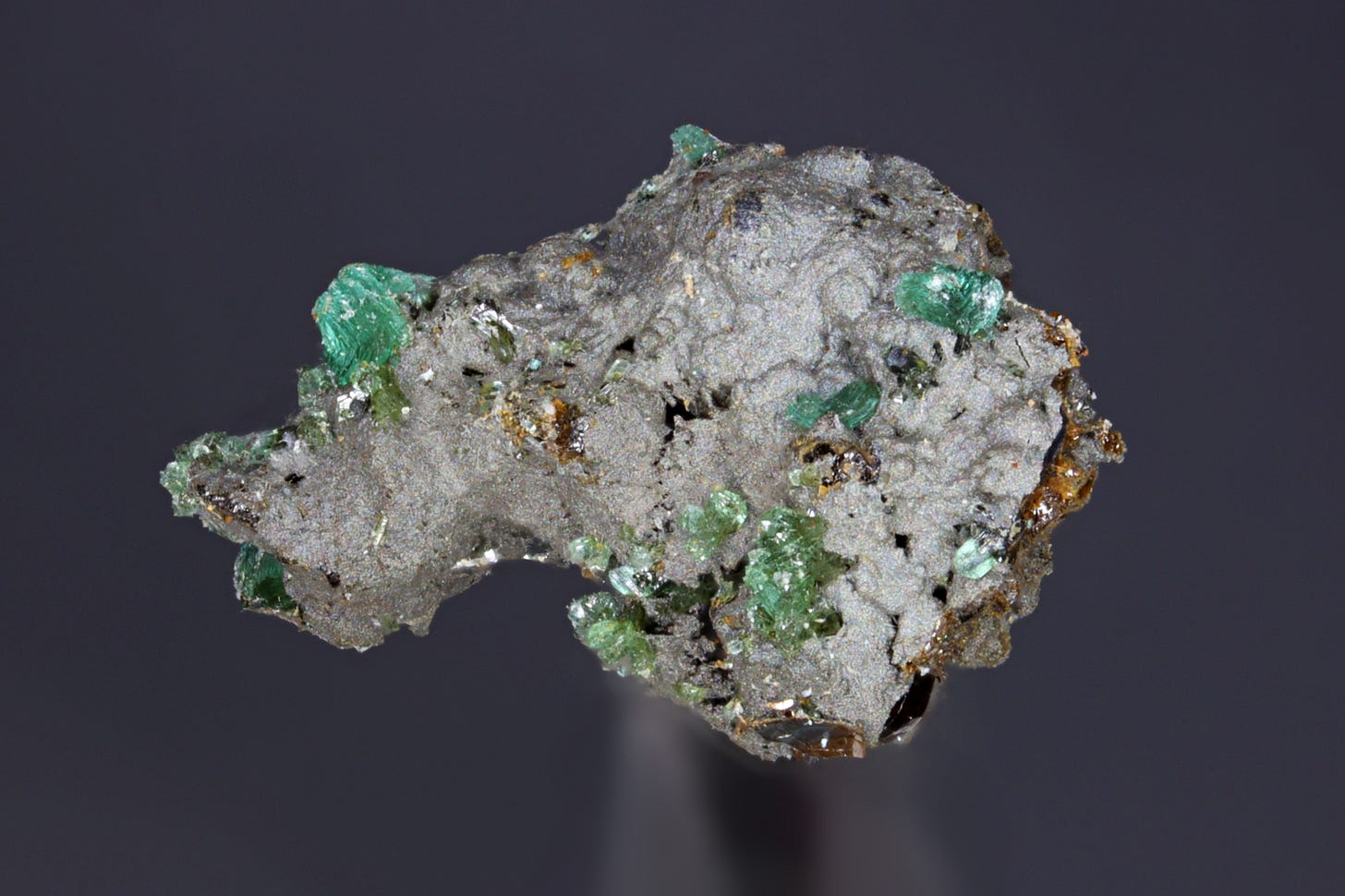If you have been paying attention (😆), you may have noticed that you have seen the photo below before.
It was in Mineral Matters #716, just a few days ago.
The specimen was identified as kipushite, and originally came via Peter Elliott. Peter has now advised (via John Haupt, thanks John), that it should now be considered philipsburgite, rather than kipushite.
So why is this?
The reclassification of the Broken Hill mineral is not because the mineral itself changed, but because the definition of philipsburgite changed. The original analysis of kipushite from Broken Hill showing "about equal amounts of phosphorous and arsenic but with phosphorous slightly higher" was a crucial piece of information. Under the old definitions, this might have pushed it towards kipushite (the P-dominant phase). However, with the new, more precise definition of philipsburgite (Cu5Zn(AsO4)(PO4)6⋅H2O), which explicitly mandates one arsenate and one phosphate group in its ideal formula, the Broken Hill mineral's composition perfectly aligns with philipsburgite.
This is a classic example of how mineralogical nomenclature evolves as our understanding of crystal chemistry and structure becomes more precise.
In case you are interested, the old philipsbornite formula was (Cu,Zn)6(AsO4,PO4)2(OH)6·H2O. Mindat will require an update! 😆
Below: Philipsburgite, Block 14 opencut, Broken Hill, Yancowinna Co., New South Wales. Width of view 3mm.




